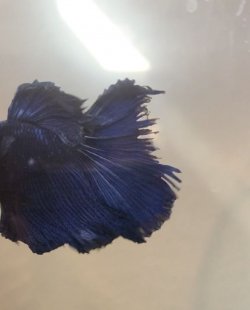binklejuice
New Member
this is my first betta ive gotten. a couple weeks after i got him, i was unable to go to the house with the fish because it was contaminated with covid. when i got back, my fish had fin rot. this was around the beginning of the year. i immediately did a full tank clean, took out sharp decor, and used test strips (i was waiting on my order for the api liquid test kit) my fish also had swim bladder disease so i gave him epsom salt baths. when he was back to normal, the fin rot got worst. i used melafix, pimafix, aquarium salt, i put in live plants, i do daily water changes (30%), i got a sponge filter (the other filter’s flow was too strong) i have api fin and body cure but i have yet to use it. ive spent so much money on medication. im out of ideas. ive read every article, watched every video on fin rot. it just wont get better. when i tested the water the ammonia and nitrite were 0 ppm and the nitrate was 5. the ph was 7.8. the water temp is 79/80° and hes in a 10 gallon tank. this might be useless information but i use prime conditioner, and feed him aqueon pellets, and occasionally frozen bloodworms and frozen dried blood worms. there are three moss balls in the tank and one java fern plant. here are some pictures (1st one is january 18, 2nd one is january 27)





